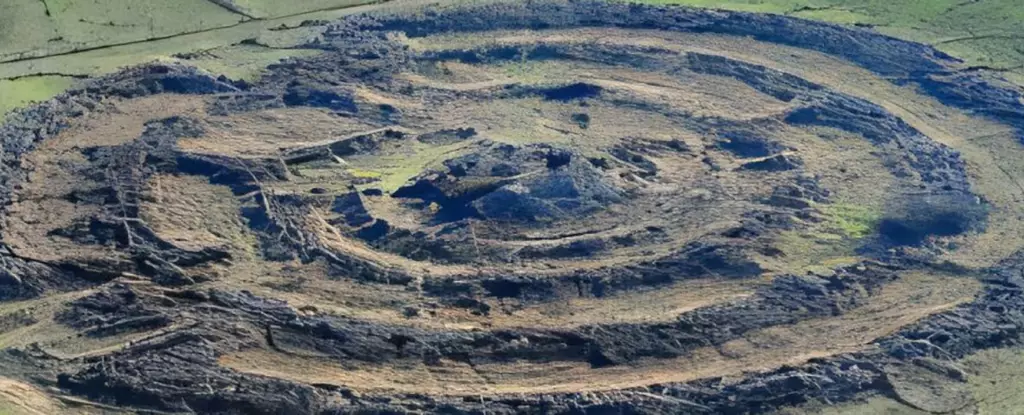Rujm el-Hiri, known colloquially as the “Wheel of Ghosts,” is an ancient site nestled within the scenic Golan Heights of southwest Syria. For centuries, this distinctive monument has sparked intrigue among archaeologists, historians, and astronomers. Initially interpreted as a significant astronomical observatory, Rujm el-Hiri’s purpose has been called into question by new research from scholars at Tel Aviv University and Ben-Gurion University of the Negev in Israel. Employing advanced geological analysis techniques, these researchers argue that the site’s alignment with celestial bodies may be a product of centuries of tectonic movement rather than an intentional design by its creators.
The new study leveraged an array of innovative methodologies to reassess the site’s historical alignment. By applying geomagnetic analysis, researchers examined the remnants of the Earth’s magnetic field embedded in the local soil and rock formations. This allowed them to trace the geological shifts Rujm el-Hiri has undergone over millennia. Supplementing these findings with tectonic reconstruction and remote sensing techniques helped create a comprehensive picture of how the monument has not only rotated but has also shifted position by several meters over time.
The researchers concluded that Rujm el-Hiri has rotated counterclockwise and that its orientation has changed due to the underlying geological activity. The intricate interplay between the Earth’s dynamic processes and human construction presents a fascinating narrative that challenges the previous perception of the site as a mere observatory.
Rujm el-Hiri’s construction history is as rich as the geological data reveals. Archaeologists have speculated that building work began as early as 4500 BCE, with additional enhancements continuing until the Bronze Age, approximately 3600 to 2300 BCE. This timeline suggests that the site has been continually modified and repurposed over thousands of years. Some researchers have postulated that it served defensive needs or even acted as a communal gathering space for ancient populations.
The meticulous arrangement of the monument, characterized by a central cairn encircled by several concentric circles of basalt stones, establishes its enigmatic allure. Stretching around 150 meters in diameter, these structural features hint at the complexities of ancient social organization and belief systems, underscoring the idea that such sites played a pivotal role in the communal life of the people who built them.
One of the most telling aspects of Rujm el-Hiri is its complexity. The researchers note that archaeological sites in the region often bear the marks of successive generations and different purposes over time. Rujm el-Hiri is no exception; modifications made by later cultures demonstrate a continual reengagement with the past. Walls have been built atop older structures, and new landscape features have been integrated, illustrating a profound respect for the history encapsulated within these ancient stones.
The ongoing shifting of the site presents not only challenges but also opportunities for further study. By combining aerial data and ground-truth analysis, researchers can derive previously undetected insights regarding the sprawling network of ancient structures dotting the Southern Levant.
The implications of this fresh perspective on Rujm el-Hiri extend well beyond the borders of Syria. The study invites a reevaluation of megalithic sites not only in the Levant but globally. It suggests a new methodology for examining how ancient cultures interacted with their environment in dynamic ways. Furthermore, the researchers have proposed that these findings could contribute to advancements in artificial intelligence, potentially leading to AI systems capable of identifying similar ancient structures in satellite imagery.
This path forward highlights the importance of interdisciplinary approaches to archaeological research, fostering collaboration between geology, technology, and historical analysis. As we refine our understanding of ancient sites like Rujm el-Hiri, we open the door to rich narratives previously lost to time.
Ultimately, the reexamination of Rujm el-Hiri enriches our understanding of its historical significance and the ancient cultures that once thrived there. By fostering new methodologies and innovative techniques, we can uncover the layers of meaning embedded in these ancient monuments, allowing us to appreciate the complexities of human history as we continue our quest to understand our shared past. The “Wheel of Ghosts” may continue to whirl with enigmas, but it is now clearer than ever that its story is profoundly intertwined with the geological narrative of our planet.

